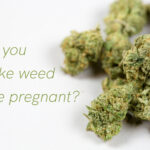Have you ever heard of Candida? How about yeast?
Candida is in the yeast family and a normal occurrence in the human body. In our bodies, Candida thrives in warm, wet places; for instance, certain areas of skin, little bottoms in diapers, and yes, a baby’s mouth. Thrush is a fungal infection caused by the excessive growth of Candida.
Signs and Symptoms of Thrush
The most common sign is white patches inside the mouth, usually present on the gums, cheeks, and tongue. Sometimes the patches can be confused for milk, but unlike milk, the white areas are not easily wiped away. Along with the discoloration in the mouth, mom may find that her baby is extra fussy with feedings, or possibly not able to latch comfortably to the breast. If the baby was once latching well, these signs would be a cause for questioning. Beyond the breast, mom may notice a diaper rash that does not present as the typical diaper rash, but rather a bumpy rash on the baby.
There are also symptoms for mom, such as pain in the nipple similar to a burning sensation, a deeper, stabbing or sharp pain in the breast itself, inflammation, and skin changes on the nipple and areola. She may also experience excessive itching on her breasts.
Treatment of Thrush
Please know that while thrush is common with breastfeeding, it is an infection and must be treated by a medical professional. It is also recommended to seek the assistance of an IBCLC to help protect your milk supply.
Thrush is entirely treatable, though contagious, so be mindful to wash hands (both mom and baby) after feedings and diaper changes. Anti-fungal medication may be necessary, along with a temporary diet change, as yeast happens to love and live off of sugar and carbohydrates. Keep the area dry. Reusable breast pads should be thrown away and replaced. Disposable pads should be changed often.
It is highly recommended to continue breastfeeding your baby through thrush treatment. If feeding is painful at all for yourself or baby, expressing breast milk is an option. It is not recommended to store milk at this time, however. Unfortunately freezing milk will not kill off the Candida, and there is a small chance that you could reinfect both yourself and baby with frozen breast milk.
Thrush/yeast can also live happily on any toys or items that baby likes to put into their mouths, so be diligent with cleaning or replacing these items.
A diagnosis of thrush can be a worrisome situation and tough to beat, but with proper care it is treatable. The most important thing is ruling out thrush early and getting a valued opinion from a lactation consultant and health care provider.










